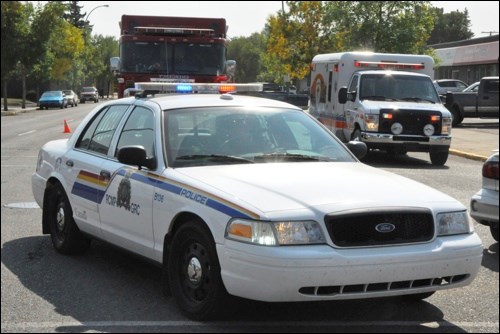City councillors expressed their concern at Tuesday's meeting about the amount of speeding that goes on in school zones in the city.
A lengthy discussion ensued focusing on solutions such as stepping up enforcement of traffic laws and suggesting stop signs in school zones might stop the speeding in those areas.
The issue had been raised by school officials and neighbourhood parents concerned about the situation for the past couple of years. The latest discussion was prompted by a meeting last week between people at Lawrence School with both Mayor Ian Hamilton and Counillor Grace Lang. The councillors heard concerns about the traffic flow in front of the school.
Lang said this has been a problem for some time and several other schools have the exact same concern - mostly about the speed in which vehicles are travelling in front of the school as well as the failure of cars to stop at crosswalks.
"Number one concern is the speed people travel down the street going down playgrounds and school zones," said Lang to reporters. The number two concern was that they "were not stopping at corners and crosswalks to let people cross."
One suggestion Lang made at the meeting was to meet with the RCMP staff sergeant to talk about greater enforcement. Lang said that council could put in fines, speed limits and the like but "if we don't enforce it we are negligent."
She suggested putting the City's new police officers to work in enforcing the traffic laws. At least one of the five new officers the city will be getting will be dedicated solely to traffic.
Later a memorandum from public works director Stewart Schafer discussing school zone speed controls was brought to council. In it, Schafer outlined what other cities had been doing to control traffic speeds in school zones.
The majority of cities had reduced speeds to 40 km/h except Saskatoon, where the speed limit is 30 km/h. Swift Current has mounted an electronic speed feedback sign on the post in front of their school zones to show the speed of approaching motorists, but those cost up to $5,000 a sign.
Speed bumps would also cost $500 to $1,000 and Schafer noted Weyburn had speed bumps and felt they didn't work, as drivers would just speed up again.
It was mentioned in the report that all the municipalities mentioned the best solution for controlling speeds in the school zone is to have the local police enforce the speed limits.
There was general agreement among councillors that the issue had to be addressed. Much of the discussion leaned towards stepping up efforts to enforce the traffic laws in the school zones. Mayor Ian Hamilton took away from that that "ultimately it comes down to enforcement" he said.
Councillor Brad Pattinson wanted council to made some decisions that could stop the speeding right away. He suggested putting up more stop signs in school zones. He noted even the speeders will respect a stop sign and that might help slow them down at crosswalks.
"People stop at stop signs," said Pattinson, who said relying on police officers to step up enforcement would not be effective in curbing the problem. He suggested perhaps trying temporary stop signs on a trial basis in the problem areas to see if they worked.
He said it was a better idea than to try a blanket policy across the city, or to strike up a committee to look at the issue, which he felt would lead to further delays.
"It sounds to me like another 60 days - or spring - before we make some decisions," said Pattinson.
That idea got support from Lang and also from Councillor Trent Houk, who also liked the idea of greater fines that might serve as a deterrent. As for enforcement, Houk noted stepped-up enforcement had been tried a year-and-a-half earlier, and that it worked for a short while, but then people went right back to speeding in the school zones.
"It's getting ridiculous the way these people are driving," said Houk of the situation.
No final decisions were made at Monday's meeting, but there was consensus that the issue needed to be addressed quickly. It is likely the issue will be revisited at city hall as early as next week at the regular municipal services meeting with Staff Sgt. Phil Wilson of the RCMP.
In all, Lang liked much of what she heard at the meeting, and said she likes the stop signs idea but also supports greater enforcement.
"If we do nothing we're not even addressing the problem. We have to do something, we have to show some type of leadership," said Lang.




